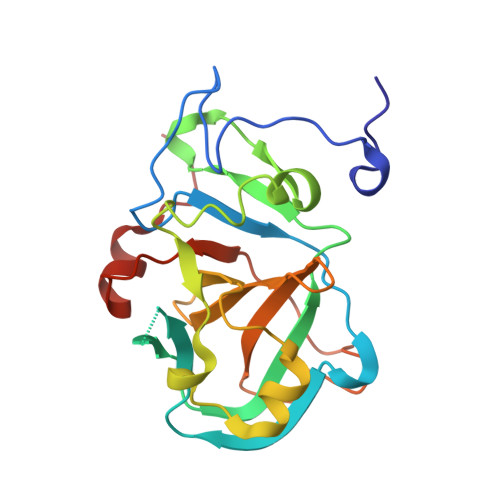Crystal structure of the avian astrovirus capsid spike.
DuBois, R.M., Freiden, P., Marvin, S., Reddivari, M., Heath, R.J., White, S.W., Schultz-Cherry, S.(2013) J Virol 87: 7853-7863
- PubMed: 23658448
- DOI: https://doi.org/10.1128/JVI.03139-12
- Primary Citation of Related Structures:
3TS3 - PubMed Abstract:
Astroviruses are small, nonenveloped, single-stranded RNA viruses that cause diarrhea in a wide variety of mammals and birds. On the surface of the viral capsid are globular spikes that are thought to be involved in attachment to host cells. To understand the basis of species specificity, we investigated the structure of an avian astrovirus capsid spike and compared it to a previously reported human astrovirus capsid spike structure. Here we report the crystal structure of the turkey astrovirus 2 (TAstV-2) capsid surface spike domain, determined to 1.5-Å resolution, and identify three conserved patches on the surface of the spike that are candidate avian receptor-binding sites. Surprisingly, the overall TAstV-2 capsid spike structure is unique, with only distant structural similarities to the human astrovirus capsid spike and other viral capsid spikes. There is an absence of conserved putative receptor-binding sites between the human and avian spikes. However, there is evidence for carbohydrate-binding sites in both human and avian spikes, and studies with human astrovirus 1 (HAstV-1) suggest a minor role in infection for chondroitin sulfate but not heparin. Overall, our structural and functional studies provide new insights into astrovirus host cell entry, species specificity, and evolution.
Organizational Affiliation:
Department of Infectious Diseases, St. Jude Children's Research Hospital, Memphis, Tennessee, USA.















